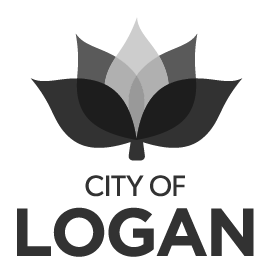In Search of Committee Cohesion - Why is there so much conflict in clubs?
Michael Connelly
In 2020 I have been called on to help negotiate peaceful outcomes to committee quarrels more than usual. After helping clubs for more than 20 years, I’ve seen a vast array of different conflicts.
You know the type of fights I’m talking about. Conflicts arise when people on the committee can’t get along, or a club member feels hard-done-by, or where different clubs that share grounds or facilities can’t agree.
I’m sure you can think of times when you’ve either been involved in these types of conflicts, or you’ve seen them play out around you. Some recent examples for me have seen committee members from one club deliberately sabotage their shared playing field at the end of their season to make life difficult for the other club.
I’ve watched members of one committee spend all their time arguing over who in the group is the biggest narcissist and not get to any positive decision making. The balance sheet of another association has been whittled away over the last two years fighting legal battles over the nasty (and apparently defamatory) things that committee members have said about each other in public forums.
And another club has watched its membership plummet to less than a third of its former size because families could no longer tolerate the ‘them-and-us’ mentality of the committee, so they drifted away to other clubs.
There are certainly some issues that warrant ‘constructive conflict’ among a committee, to challenge the status quo, to strive for bigger goals or to make important decisions as club leaders. But did you really need to be subjected to that 14-page email about why George should have been kicked out of the AGM?
I believe that no one has ever taken on a leadership role in a club or community organisation for the sole purpose of ruining that organisation. However, I know of lots of people who have ended up ruining their club by digging their heels in over petty issues, or conflicts that have spanned generations. But from their point of view, they firmly believed that they were acting in the best interests of the club.
To be blunt, the types of fights that can tear clubs and committees apart are simply a waste of time.
What does it really cost when a committee spends all of its time fighting?
All of the examples above have festered and escalated because the people involved have been so busy living in the past that they can’t see the damage they are doing in the present nor the opportunities they are missing for the future.
If you find yourself embroiled in a battle over what somebody said about someone else last week, last year or even three decades ago, you’ll have no time left to build a strong foundation for future growth and viability.
Part of the solution for clubs to avoid value-destroying conflict (but admittedly only a small part) is to have great governance systems in place. The most resilient organisations don’t waste time fighting petty fights, because they have their house in order.
Their governance systems start with a great constitution that covers the basics to keep them incorporated, but also addresses those niggly points that help avoid unnecessary fights, including straightforward steps for nipping grievances in the bud before they turn into fights. And as these clubs are not wasting time fighting, they’ve got time to have a great strategic plan, risk management plan, asset management plan, statutory plans and child protection.
But good systems are probably only about 20% of the solution. The other 80% is pure psychology.
While most people get on a committee for similar reasons in the first place, they stay there for very different reasons indeed. Most of the people I ask first joined their committees for one of three reasons: 1) no one else put their hand up so thought I’d give it a go; 2) I didn’t want to see my club fold; or 3) I was volunteering ‘on the field’ and got dragged onto the committee (often because of reasons 1 and 2!).
But why people stay on the committee says much more about their inner character.
It can be challenging for committee members to honestly explore their own motives, which will exist on a continuum between genuine altruism and a feeling of self importance. It is only when volunteers really understand themselves and appreciate that different people are driven by different reasons for volunteering that they will have the opportunity to meaningfully connect with others, to either avoid conflict or learn to channel it to find common interests.
Sport is competitive, and competition breeds passion. But passion is no excuse for being nasty, disrespectful or selfish.
While it may take some time, it is easy to fix a club’s systems to help avoid negative conflict. But meaningful, lasting change only comes from a genuine understanding of people and an appreciation for the differences in their motivation.
I’m sure that I will keep being asked to help resolve conflicts in clubs. When I am, I will continue to take committee members through this process of understanding themselves and their own drivers better. When a volunteer resolves their inner conflicts, the club conflicts usually resolve themselves.
Michael Connelly doesn’t help clubs - he helps the wonderful people who make up the clubs! Michael has learned that everyone holds the key to their own door of change, and that their door can only be opened from the inside.
If you are experiencing club conflicts and are looking for a meaningful resolution, contact Michael for a confidential discussion.




























